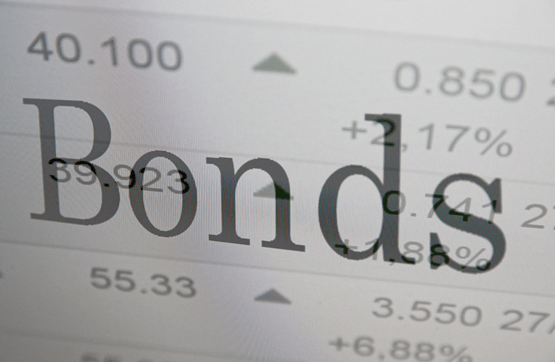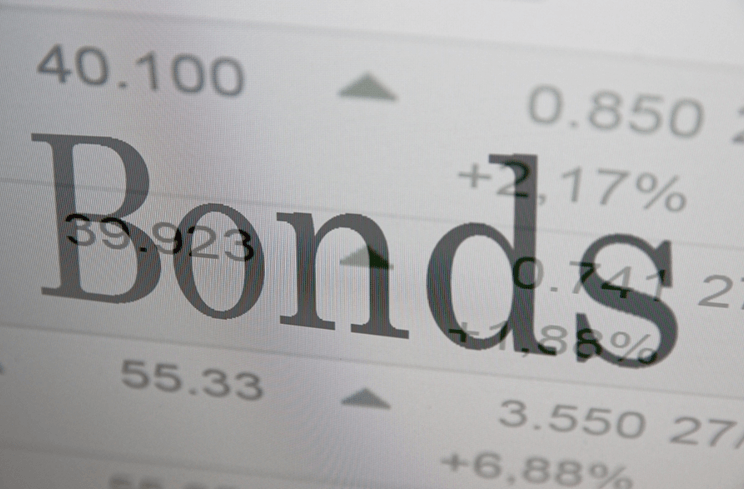Guide: How to Invest in Bonds
When people think of financial markets, they usually think of stocks. Stocks are attractive since the upper bound knows no limits, and you can actually own a piece of an exciting company. If the company does well, you can really cash in. Stocks are sexy. That’s why we like stories about investors that bought Apple stock at $7 per share.
By comparison, bonds are boring, boring, boring. The upside profit potential of bonds is largely restricted, and you don’t get to tell people you own a piece of a well-known company.
However, bond investing is an integral part of any long-term financial investment or retirement plan.
We will dig into the details of bonds, give you some tips on what to watch out for in the bond market, tell you how to buy a bond, and help you figure out the best way to invest in bonds and work them into your portfolio.
We will review:
- Bonds – What are they?
- Why do investors buy bonds?
- Individual bonds or bond funds?
- Risks to watch out for when bond investing
- How to choose bonds that are right for your portfolio
- Bond funds to consider for your portfolio
- How to buy bonds online
What Are Bonds?
Bonds are essentially IOUs issued by governments or corporations. When a government or corporation needs cash, it issues bonds. We call these governments or corporations issuers. When you invest in bonds, you are buying the issuer’s debt.
In exchange for your immediate cash, the issuer agrees to pay a set amount of interest over a set amount of time, along with your principal. In this way, the issuer gets the cash it needs to invest in capital improvements, payroll, etc., and the bond buyer receives a relatively stable interest-gathering investment.



Image Source: What are Bonds?
Why Investors Buy Bonds
Investors usually purchase bonds in order to diversify their portfolios. In most cases, bonds will be part of a well-diversified portfolio that also includes foreign and domestic stocks and/or stock mutual funds or ETFs.
The major benefit of bonds is that, while they do not have the same upside potential of many stocks, they are considered to be more stable.
In the event of a bull market, bond returns may seem sluggish and frustrating. However, in a bear market, bonds are often able to outperform stocks.
The reason for this is that, while the value of a company may fall in a bear market, the company still has debt obligations it needs to honor. However, if a company folds, this certainly affects bond holders and will likely harm profits for bond holders.
Individual Bonds or Bond Funds?
People need to know how to invest in bonds. In most cases, individuals will see more benefits from buying bonds in existing bond mutual funds or ETFs. The reason for this is diversification. In order to be properly diversified, a bond investor will likely need to spend upwards of $50,000–100,000 in individual bonds.
Such an investor will incur large trading costs and will not likely get as low a price as fund managers can get within their mutual funds or ETFs. Another disadvantage is that individual bond holders will need to wait until the bond matures, which can take between one to twenty or more years.
In a fund, investors are diversified in up to hundreds of different bonds. So, if a particular government entity or corporation defaults on its debt, it will not adversely affect a large part of your portfolio. You can also trade in and out of funds without needing to wait for individual bonds to mature.
One drawback of bond funds is that the returns are not fixed, so it is not as easy to predict your income and capital gains.
Possible Risks to Buying Individual Bonds – What to Look For
There are a number of factors to consider when thinking about how to purchase bonds. We will go over a number of definitions and buzzwords that you need to understand before you invest in bonds.
Risk: All investments carry a degree of risk. The rule of thumb is that the higher the risk, the higher the potential return. By considering the other factors listed here, you will be able to make your own assessments. As always, the more you diversify, the lesser your risk.
Price: The price you pay for a bond is affected by the promised interest rate, credit quality, term of maturity, and supply and tax status of the bond, among other factors. Bonds in the primary market sell at par (100% of the face value) while, in the secondary market, bonds can sell below or above that face value.
All-in-One Change Management Tools
Top Rated Toolkit for Change Managers.
Get Your Change Management Tool Today...
Interest Rate: These fall into three categories: fixed, floating, and payable at maturity. Most fall into the first category. Fixed bonds will pay interest on the bond twice per year and then the principal when the bond matures.
Floating interest rates are based on a certain benchmark; for instance, the interest rate on treasury bills, and can fluctuate up or down based on that benchmark.
Bonds that are payable at maturity are exactly as they sound. There are no interest payments until the bond matures, at which point the investor will receive the full value of the bond.
Maturity Period: This is key when considering how to buy bonds and can vary widely. Certain bonds may mature in less than a year, or it may take up to 20 years or more. Generally, short-term bonds pay lower interest rates as they are considered lower-risk and are repaid sooner. Long-term bonds pay better but are subject to factors that the investor might not be able to predict on such a long timeline.
Redemption: Based on the structure of the bond, some may have specific redemption features that allow the issuer or the investor to cash in on the bond before maturity. These features can vary, so make sure you understand how your return could be affected by an early call or how you might benefit from selling the bond back to the issuer before maturity.
Yield: This is based on the price you paid for the bond and the interest payment that the bond earns. There are two types – yield to maturity and yield to call. In general, the yield to call will be higher, as the issuer often pays a premium in order to take back the bond earlier than the original maturity date. Yield to maturity is the amount that the bond is set to pay under the original structure of the bond.
Default Risk (secured vs. unsecured bonds): Let’s talk about when it all goes wrong. In some situations, an issuer will default on its debt. This is bad news for bond holders. This can be the result of a company going bankrupt or a government failing to meet its obligations.
A secured bond is a bond that is backed by some kind of collateral. Think about a car loan or a mortgage. The bank feels more comfortable taking on this debt because it can simply take back the car or house and recoup some of its investment. Secured bond holders have first claim to payment in the event of a default.
By contrast, unsecured bonds are not associated with any collateral. They are based on the investor’s faith and trust that the issuer will be able to pay back the bond. For this reason, you will usually see higher interest rates on unsecured bonds. Examining risk is a crucial factor in learning how to invest in bonds.



Tax Issues: There are some bonds that offer specific tax advantages for investors. Interest received from US treasury bonds, for instance, is not subject to local or state income tax. In the same way, the profits from many municipal bonds are exempted from tax in that particular district.
These exemptions can be very specific but can also greatly affect your total return on investment. Make sure you understand the advantages and disadvantages of these special tax rules.
Bond Ratings: The “Big Three” credit rating agencies are Moody’s Investors Service, Standard & Poor’s, and Fitch Ratings. These agencies assign credit ratings to debtors, indicating their ability to make interest payments and avoid default.
The highest rating is AAA, or Aaa, indicating a low likelihood of default. Stable governments and large stable companies earn this rating. The other end of the scale goes down to CCC, CC, C, and then D. Bonds at a D rating offer high interest rates but also a very high risk of default or nonpayment.
These high-risk, high-return bonds are often referred to as junk bonds.
How to Choose Bonds That Are Right for Your Portfolio
If you are investing in individual bonds, you will need to do some detailed research to ensure that a particular bond is right for you. As stated at the top of the page, this is not a suitable strategy for most people. These days, there are many great options in the form of mutual funds and ETFs (exchange-traded funds).
If you are a regular investor looking for a place to stash your cash until retirement or looking to provide some balance to a stock-heavy portfolio, there are plenty of options out there.
The first thing to look for is a highly-diversified fund. You will also want to pick a fund with a low expense ratio, which is the percentage that the investment firm charges in order to manage your money within the fund.
As bonds typically see a lower long-term growth rate than stocks, it is especially important to reduce this expense as much as you can.
Also, when bond investing in a fund, do not only look at the bond yield. You will want to look at the total return. Since the yields are not fixed, the value of the fund itself can fluctuate based on market forces.
When the fund is more attractive to investors, they will pay a premium to be involved in the fund. So, look at the overall return, not just the interest payments you will receive.









Bond Funds to Consider for Your Portfolio
Vanguard, SPDR, and iShares have some of the best-diversified funds and come with a very low expense ratio, usually less than 0.20%. Beware of some of the more actively managed bond funds. While they might see slightly better returns, they might also have expense ratios up to half a percentage point higher or more, which can really reduce your overall gains.
Here are ten low-cost, diversified ETFs that you might consider when you purchase bonds for your portfolio:
- iShares Core 10+ Year USD Bond (ILTB) Expense Ratio: 0.12%
- Vanguard Long-Term Bond ETF (BLV) Expense Ratio: 0.07%
- iShares 1-3 Year Credit Bond (CSJ) Expense Ratio: 0.20%
- iShares 0-5 Year Invmt Grd Corp Bd (SLQD) Expense Ratio: 0.15%
- Vanguard Russell 2000 Growth ETF (VTWG) Expense Ratio: 0.15%
- Vanguard Financials ETF (VFH) Expense Ratio: 0.07%
- Fidelity® MSCI Financials ETF (FNCL) Expense Ratio: 0.12%
- iShares Core US Growth (IUSG) Expense Ratio: 0.07%
- Vanguard Mega Cap Growth ETF (MGK) Expense Ratio: 0.07%
- Vanguard Total International Bond ETF (BNDX) Expense Ratio: 0.13%



Image Source: How to Invest in Bonds
How to Buy Bonds Online
It can be easy and inexpensive to buy bonds online. If you are interested in US Treasuries, do not use a broker site. If you are an American citizen, you can buy them directly from the government at TreasuryDirect.
You can also buy corporate and municipal bonds at the big online brokers like E*Trade, Charles Schwab, Scottrade, TD Ameritrade, and Fidelity. Just be sure you understand all the fees involved. Often, there will be no trading fee, but the price of the bond will be marked up to pay for the trading costs. Factor this into your return calculations.
If you are interested in buying individual bonds with a bit more guidance, there are a few online brokers that can help guide you through the process. Check out JW Korth and FMS Bonds for municipal bonds.
If you are interested in mutual funds and ETFs, you can buy them through the big online brokers just like you would buy a stock, or you can go straight to the source, like Vanguard.
Free Wealth & Finance Software - Get Yours Now ►
Conclusion: Bonds Are Big
Bonds don’t get the headlines like stocks do, but they are an integral part of any successful long-term investment strategy. However, each type of bond can be unique, and bonds, in general, are more complex than stocks.
So, think carefully about how to buy bonds and make sure to do your research before splashing a huge pile of cash into the bond market.
AdvisoryHQ (AHQ) Disclaimer:
Reasonable efforts have been made by AdvisoryHQ to present accurate information, however all info is presented without warranty. Review AdvisoryHQ’s Terms for details. Also review each firm’s site for the most updated data, rates and info.
Note: Firms and products, including the one(s) reviewed above, may be AdvisoryHQ's affiliates. Click to view AdvisoryHQ's advertiser disclosures.





